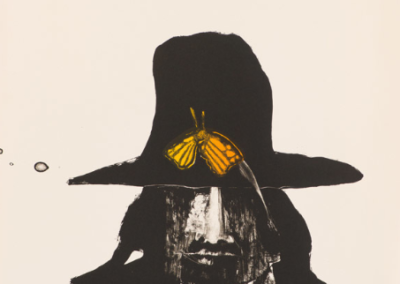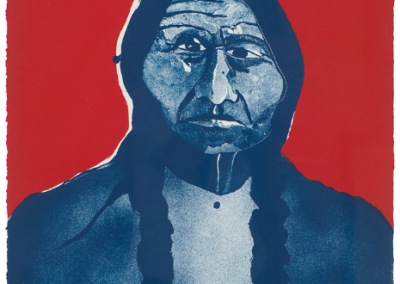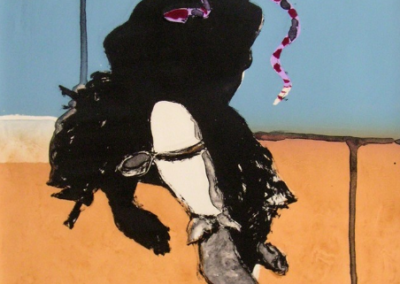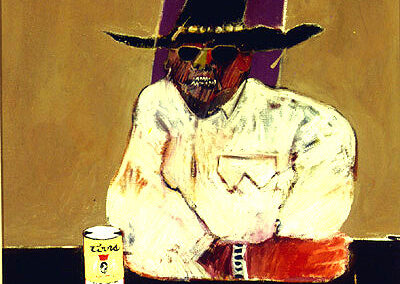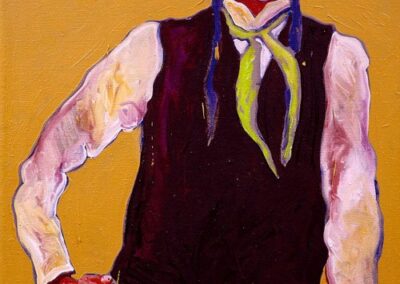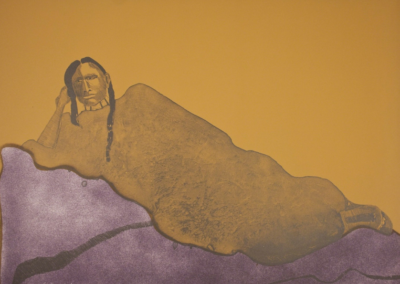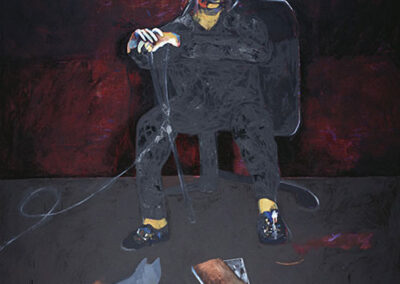Our latest Artist You Need To Know is someone whose work was recently featured, in a wonderful exhibition, at the McMaster Museum of Art, in Peripheral Vision(s): Perspectives on the “Indian” image by 19th century Northern Plains warrior-artists and 20th century American artists, Leonard Baskin and Fritz Scholder (this was curated by Rhéanne Chartrand and Gerald McMaster).
Fritz Scholder (1937-2005) was an enigmatic artist, often described as ‘controversial and prolific.’ In many ways, he actively resisted labels and stereotypes, while also challenging them in his many works. Although being an ‘enrolled member of the Luiseno tribe, he often said he was not Indian [considering himself equal parts German and French as well as of the Californian tribe]. Scholder’s works were immediately recognized for their insight and powerful commentary on publicly held stereotypes of Native Americans and propelled Scholder into a position of prominence as an artist.’ (all from his web site)
Too often – still – the term ‘Indian artist’ is more of a dismissive, ghettoizing cage than anything else: in Scholder’s works, often vibrant in formal terms and engaging regarding his subject matter, especially his figures, he forever altered what that term might – or should – mean, in ways both direct and subversive. In many ways, he was making images that had not been seen before, or using the world around him and his experiences to challenge many preconceived, and often erroneous, notions within the art world and beyond to larger Norther American social narratives.
-

Portrait of an American #2 (First State), 1973
-

Indian in Paris, 1976
-

Snake Dance, 1979
-

Study White Buffalo, 1976
-

Indians Forever, 1971
-

Indian Seller, 1976
Like many artists who recorded their times and the world they lived in with an uncomfortable – and canny – eye, Scholder has seen more recognition posthumously than during his life time.
Besides the aforementioned exhibition at the McMaster Museum of Art (2020), the Smithsonian’s National Museum of the American Indian, in 2008 mounted a dual venue Scholder retrospective provocatively titled Indian/Not Indian (in Washington, D.C. and NYC). Further: ‘On October 4, 2015, the Denver Art Museum opened a major travelling exhibition of Scholder’s “Indian” series titled, Super Indian: Fritz Scholder, 1967-1980. Super Indian then travelled to the Phoenix Art Museum and the Nerman Museum of Contemporary Art in Overland Park, Kansas.’ (from Wikipedia)
-

Indian with Beer Can, 1969
-

Half Breed, 1974
-

Reclining Indian Woman, 1975
-

Mad Indian No. 3, n.d.
-

Dead Indian with Snowy Owl, n.d.
-

Self Portrait with Grey Cat, n.d.
Scholder’s work is immediately recognizable in his expressionistic hand, wherein exploration, travel and lived experience are captured in his scenes (an influential teacher was Wayne Thiebaud). Although his style is often abstracted, melding ‘distortions, explosive brushwork and vivid colours.’ (from here). Scholder summed it up well in his own words: “One colour by itself isn’t that interesting—it’s the second colour and a third colour, and a dialogue starts and pretty soon you’re swept up in it.” (from artsy.net)
He is represented in numerous collections around the world, and much more about this artist can be learned at his site.


